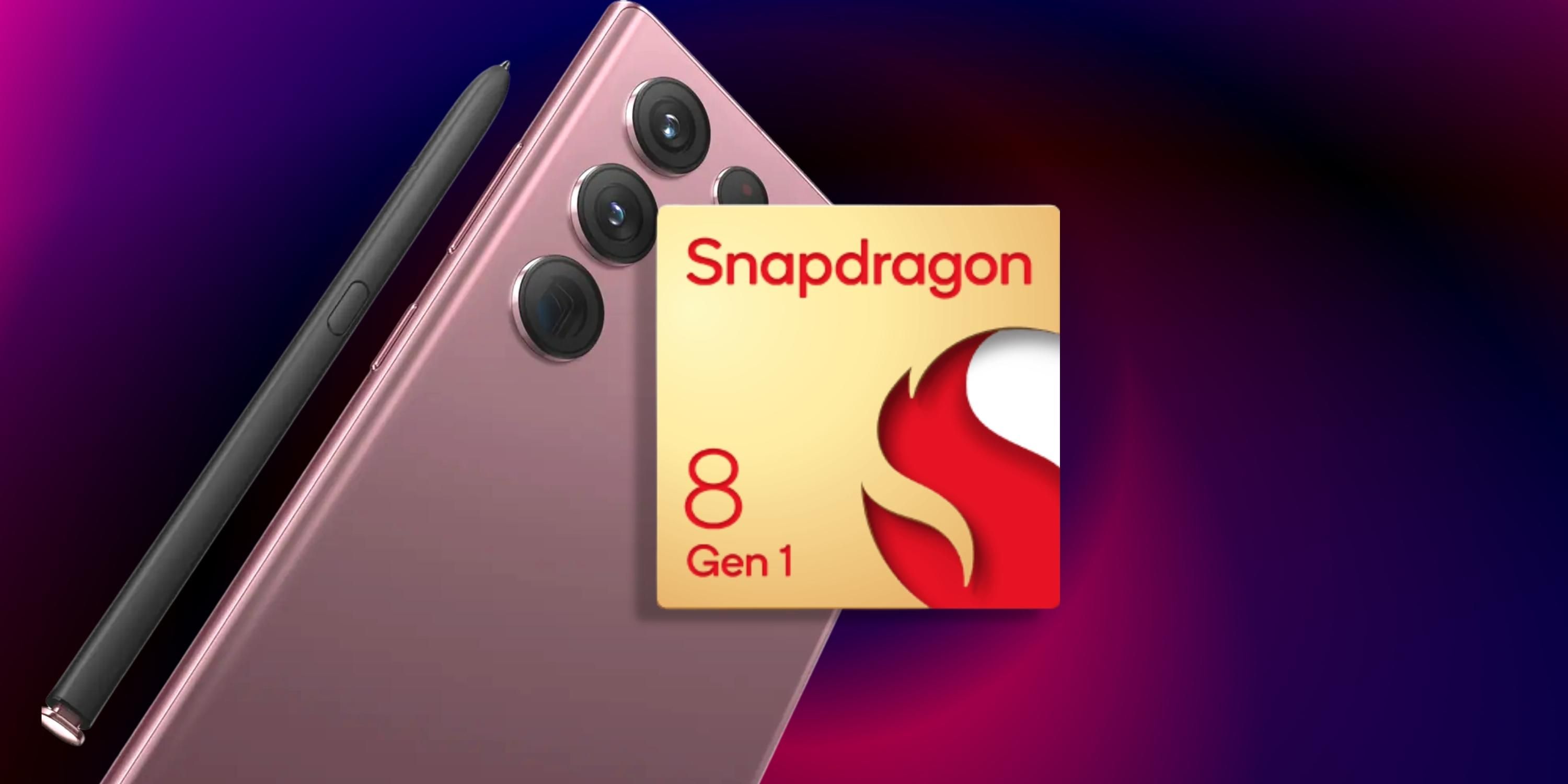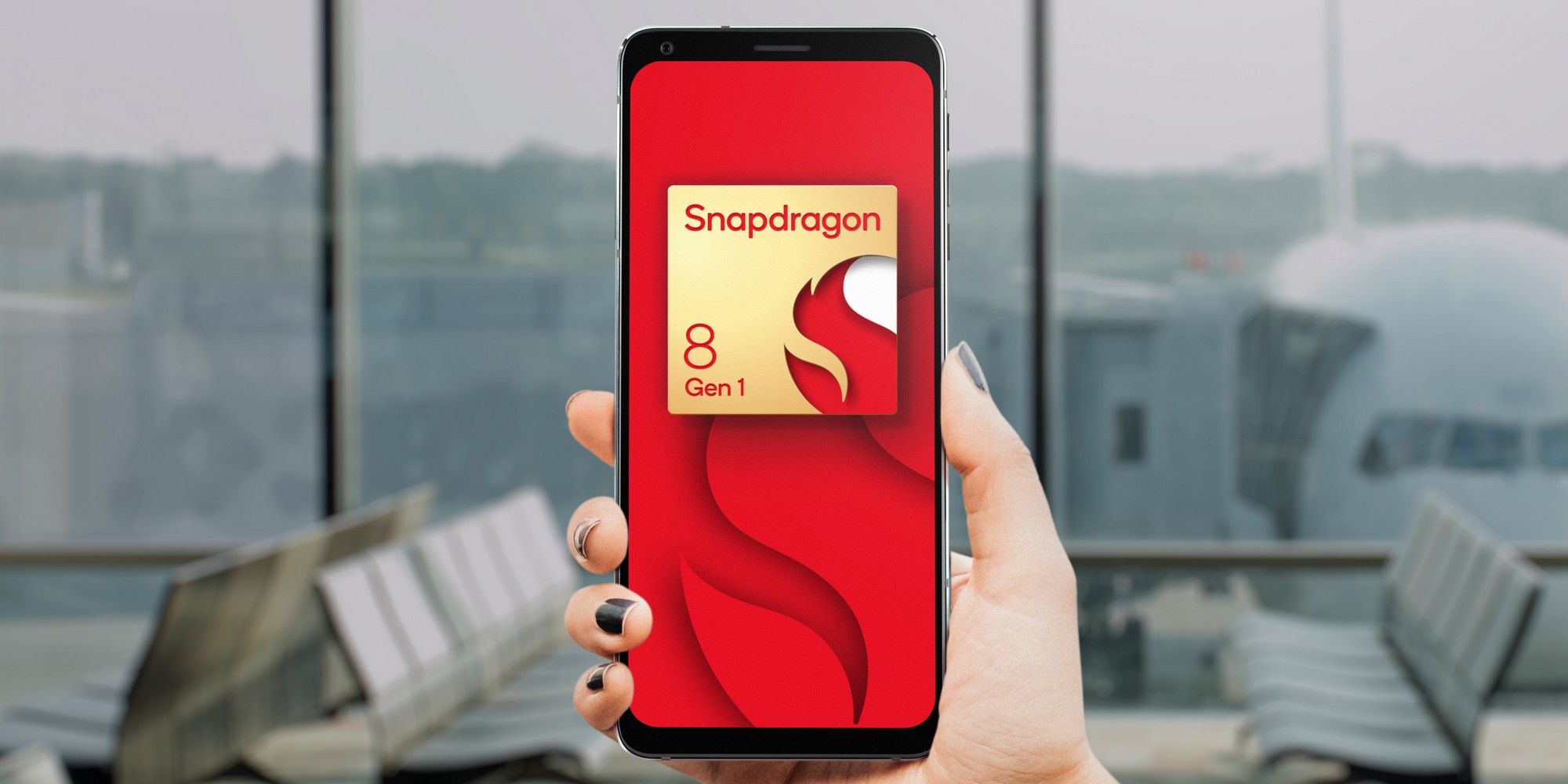When it comes to Android smartphones, Qualcomm is known for manufacturing some of the best chipsets, and its latest flagship SoC is the Snapdragon 8 Gen 1. While the processor was announced in November 2021, not a lot of smartphones have leveraged its potential yet. Launched in December 2021, the Motorola Edge X30 became the first smartphone announced with a Snapdragon 8 Gen 1 inside.
Another smartphone that's powered by the Snapdragon 8 Gen 1 is the OnePlus 10 Pro, which is only available in China for now. However, the availability of Qualcomm's latest flagship chipset is about to get a major boost thanks to Samsung. The Galaxy S22, Galaxy S22+, and the Galaxy S22 Ultra all come equipped with a Snapdragon 8 Gen 1 inside.
The Snapdragon 8 Gen 1 is an octa-core processor that consists of one high-performance core at 3000 MHz, three balanced cores at 2500 MHz, and four efficient cores at 1800 MHz. Along with LPDDR5 RAM and an Adreno 730 GPU, the Snapdragon 8 Gen 1 provides excellent multitasking and gaming performance. In addition, the chipset supports 5G connectivity thanks to its Snapdragon X65 modem, and can shoot 8K videos at 30fps. Built on 4nm technology, the processor is one of the fastest and most power-efficient mobile chipsets for Android smartphones. It follows on from the 5nm Snapdragon 888+ found in most of the flagship Android phones launched in 2021.
How Snapdragon 8 Gen 1 Performs On Benchmarks
Smartphones that run on Android majorly feature processors from Qualcomm (Snapdragon), MediaTek (Helio, Dimensity), and Samsung (Exynos), with Google (Tensor) being a recent entrant in the race. While Google launched the Pixel 6 and Pixel 6 Pro with its Tensor chipset back in 2021, smartphones with Snapdragon 8 Gen 1 have started showing up. Samsung's Exynos 2200 and MediaTek's Dimensity 9000 SoC are not available on any smartphones yet, which makes it very difficult to comment on real-world performance. According to AnTuTu, the Mi 12 Pro with a Snapdragon 8 Gen 1, and an average score of 979,499 points, was the best performing Android flagship of January 2022.
The Snapdragon 8 Gen 1 has shown consistent performance on AnTuTu, even reaching scores of one million on the OnePlus 10 Pro and Motorola Edge X30. Along with UFS 3.1 storage and LPDDR5 memory, the Snapdragon 8 Gen 1 has a higher CPU frequency and is based on a more efficient chip architecture. It is great at managing RAM, running heavy applications, and consumes less power while doing so. Additionally, the fact that smartphone manufacturers around the world are preparing to release premium devices with Qualcomm's latest chipset inside shows their faith in the chip and its capabilities.
In comparison to Apple's A15 Bionic, the Snapdragon 8 Gen 1 has two additional cores, a smaller transistor size, and supports up to 20% more memory bandwidth. Further, the A15 Bionic scores about 847K points on the AnTuTu benchmarking platform, which is less than the score typically obtained by Snapdragon 8 Gen 1. However, based on Geekbench scores, the A15 Bionic has about 40% better single-core performance and about 27% better multi-core performance. Overall, the Snapdragon 8 Gen 1 is the closest contender to Apple's A15 Bionic, which dominates with higher CPU clock speed, higher GPU frequency, and better optimization. Nevertheless, the Snapdragon 8 Gen 1 is among the top mobile processors for Android smartphones.


